We have been having problems with our car battery becoming discharged at irregular intervals of a few weeks, but so far we have had no luck tracking down the cause. So I decided build a monitoring device in the hope that this might give me some more information.
Several problems needed to be solved:
- A car is quite a hostile environment in the terms of temperature and moisture.
- Significant electrical noise and surges can occur in a cars system.
- I wanted to support firmware updates without having to remove the device from the car.
This is the circuit diagram for the project:
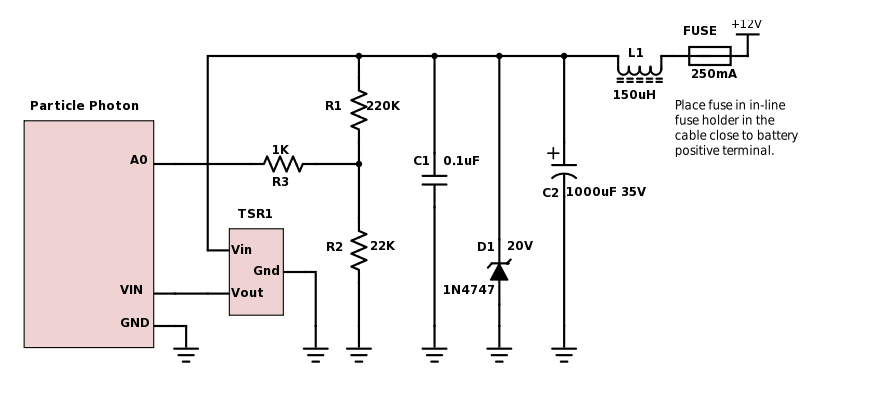
The battery monitor was been running continuously for 2 weeks now with no problems during some quite cold and wet weather. I have successfully done one over the air firmware update. So at least in the short term the problems seem to have been addressed!
The data so far logged in ThingSpeak can be seen in this graph. The peak at the beginning is due to the battery being charged with a battery charger.
 Chris
Chris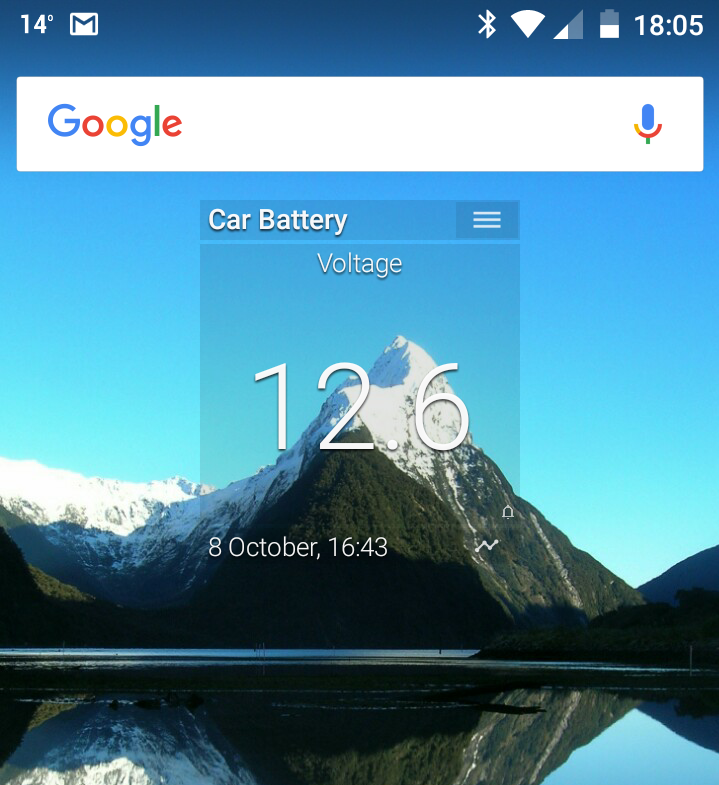




 JP Gleyzes
JP Gleyzes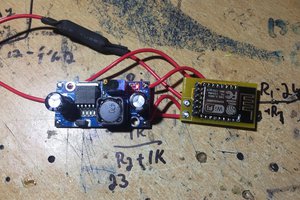
 Tinkers Projects
Tinkers Projects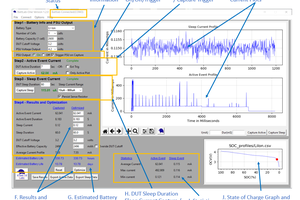
 Bluebird Labs Doug Peters
Bluebird Labs Doug Peters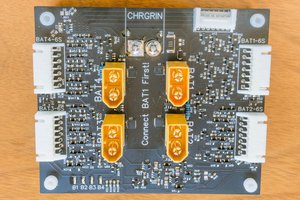
 Bud Bennett
Bud Bennett
You should check out about guide for car issues on Google You Should See it here https://carsissue.com/coolant-loss-only-when-ac-is-on-causes/